Identifying Poinsettia Deficiencies
Your poinsettia crop is no doubt coming right along and the light at the end of the tunnel might be visible. But, as we all know, now is not the time to get complacent, because so many variables are at play in your greenhouse.
In THIS VIDEO from our 30-plus-episode series on poinsettia production, the topic is deficiencies related to nutrition and fertility, or lack thereof.
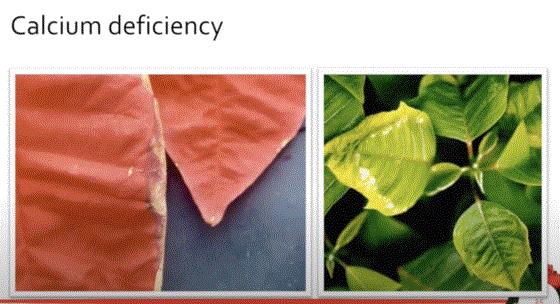
Our experts from Selecta One tackle three common deficiencies in poinsettia finished production: magnesium, nitrogen and calcium. They share visual examples of what to look for and how to combat these issues. Finally, they spend time discussing exactly where deficiencies occur in the structure of a poinsettia plant. It’s a 10-minute video packed with great information!
If you want to binge-watch the entire series, here’s a link to the FULL PLAYLIST.
Nick’s Tip of the Week: Mums—Lodging a Formal Complaint
Each week, I’ll work with my buddy Nick Flax, a technical services expert at Ball, to share a concern that’s come up during one of his numerous calls with growers across North America. This week he’s sharing a garden mum issue he addressed with growers this week, in an effort to help you and your team answer some questions and prepare for 2023.
PROBLEM: Despite all the weather-related challenges this year, I’ve seen some pretty fantastic mums hitting retail in my locale over the last couple weeks. Kudos to all of you who have tuned in to the Tech On Demand newsletter and hopefully used our timely tips to get out in front of issues throughout the season.
While it's crucial you stay on top of late-season disease management right now (check out our key mum disease management documents on the BALL MUMS MICROSITE), another problem has popped up recently: lodging (a.k.a. shoot breakage along the main stem). It’s heartbreaking to see big, colorful mums falling apart, but it’s also tough to manage after the fact.
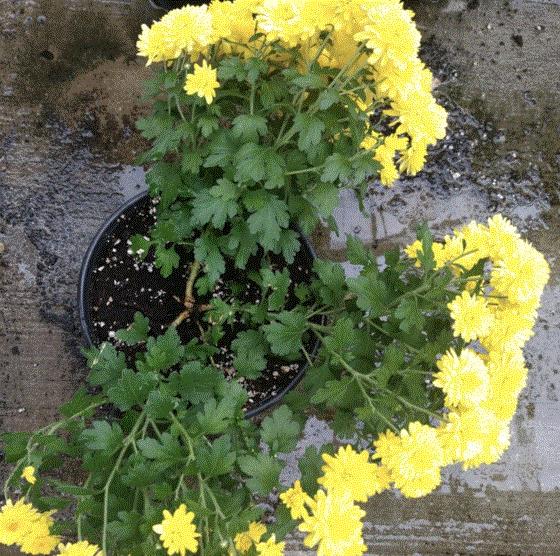
NICK’S TIP: In general, lodging is caused by a weak union between the main stem of a mum and its axillary (side) shoots. There are a few things you can do to reduce lodging, but a good chunk of this week’s tip will focus on best-practices for 2023. Here are two key factors that affect lodging:
Plant architecture. If a plant’s branch angle (relative to the main stem) is too wide, the chances of lodging are much greater. As mums develop, each branch can get weighty—especially on your biggest mums, or plants that are being overhead watered or getting rained on. While I’ve never seen research or data that indicates what the strongest branch angle is for mums and other herbaceous crops, a 60° to 70°angle from the trunk is regarded as the optimal range for strong branch unions in trees. As such, it’s reasonable to say this is a good target to shoot for producing crops with a strong branching habit like mums (main stem is 0°; measure between stem and top of a branch).
For example, if 1 plant per pot (ppp) mums in 8- to 9-in. pots are pinched too hard and only three or four nodes remain, these shoots will grow outward at a relatively obtuse angle (about 80°) as the plant fills out. This means each branch is supporting 25 to 33% of the plant’s weight at finish. That is a LOT of mum being held up by an architecturally weak branch union, so very little force is needed to break that shoot off from the main stem. If you pinch your mums, be sure to leave at least 5 to 7 nodes below the pinch to promote a more upright branch angle and reduce the load on any given branch at finish, especially in your 1 ppp mums.
Fertilizer management. Failing to change fertilizer formulations as mums mature and over-feeding mums at finish are common fertilizer management practices that encourage lodging.
-
Applying ammonia-based fertilizers through the first half to two thirds of the production cycle is considered good practice, but using this class of fertilizers late in production encourages plants to remain soft, which increases the risk of breakage. Switch to a more nitrate-based fertilizer (your favorite Cal-Mag) once that “roundy-moundy” architecture is well-established to reduce the risk of lodging at finish.
-
Heavy feeding late in production encourages mums to remain soft, regardless of the main nitrogen source. By the time plants reach visible bud, they don’t need much more fertilizer because they're essentially done growing and just need to finish developing (basically just need to push water into already existing cells, not create new ones).
-
Excess ammoniacal nitrogen often encourages lush growth below the bud set and can cause leaf size and overall shoot weight to continue increasing.
-
Excess nitrates, on the other hand, cause leaves and stems to become “crunchy” and brittle as the plant sequesters the unused nitrogen.
-
If your mums are soft and lodging but you’re still applying feed, switch to clear water only from here on out. In the future, begin tapering off your fertilizer program as plants reach visible bud to help combat this tendency.
If your mum architecture is good but plants are still lodging and you’re losing plants at ship or retail, consider the following options to help combat further losses:
-
Stake and tie or install cages to help keep shoots from breaking and falling. If caging is the route you go, be sure to use two-piece/split cages to avoid bunching the canopy in order to pass it through the rings.
-
Lower the air temperature in your production area (if growing or holding plants in a greenhouse) to encourage better tone and help reduce the likelihood of lodging.
-
Apply a PGR drench to stop any last-minute growth your mums are doing and help improve tone. This late in the season, 1 to 2 ppm of paclobutrazol is more than enough to do the trick. Note that using a rate above this won’t enhance the effect—it’ll just cost you more in total PGR used.

TRAINING VIDEO: Floriculture Crop Nutrition
This time of year, it’s beneficial to take some time each week for a refresher on some of the basics related to producing top-quality plants and avoiding preventable issues.
For the next month or so, I’ll share videos or podcasts intended to help you educate yourself and your team. You might consider them “basics,” but I’m sure the presenters will share some new ideas or approaches you haven’t tried before. If you have new members joining your production crew, consider sharing these links with them so they can gain some additional knowledge, tips and tricks heading into spring production.
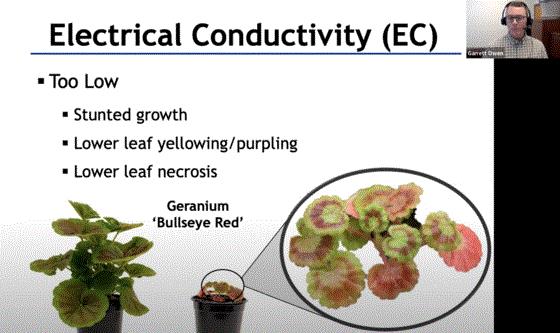
Let’s start with one of the most critical pieces of the production puzzle, nutrition. This VIDEO, part of the American Floral Endowment Grow Pro Series, features presenter W. Garrett Owen from the University of Kentucky. He digs into the three building blocks for growing healthy plants—fertilizer, substrate and water—and how they factor into overall plant nutrition.
Some of the specifics he covers in the video include how in-house nutrient monitoring provides you with key pH and EC values needed for successful crop production, an overview of pH and EC nutritional disorders, monitoring methods and additional resources for you and your team.

TRAINING PODCAST: URC Handling
Before too long, your first unrooted cuttings for spring 2023 will arrive on the loading dock and the new season will begin. In preparation for that exciting day, take some time to review receiving and handling processes and check out THIS PODCAST I recorded with Dr. Will Healy covering best practices for “cuttings husbandry.”
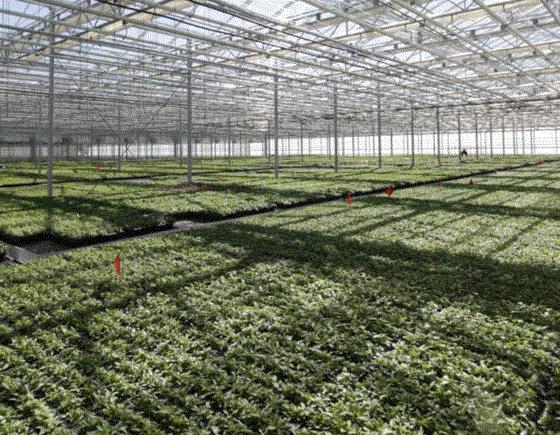
Cuttings have to endure a long and arduous journey from their farms of origin to your greenhouse. When they were harvested and packed, they were as healthy as can be. But we all know what can happen in a truck and a plane and another truck … From temperature rollercoasters to severe dehydration, they often arrive in desperate need of attention. Plus, the current state of transportation logistics is pretty scary, so these tips and tricks are more important than ever.
Are you and your team prepared to practice cuttings husbandry and even resuscitation before the little plants move to the transplant line? You will be after this episode.
TECH TIP: Saving Petunias
The Tech On Demand team receives a lot of messages every year when young plants arrive with visible signs of poor health. The discussion usually centers around whether the damage can be reversed and the plants will be viable and healthy, or if they should be reordered/replaced. Here’s one such example: petunia liners that arrived with black or brown spots on the foliage.
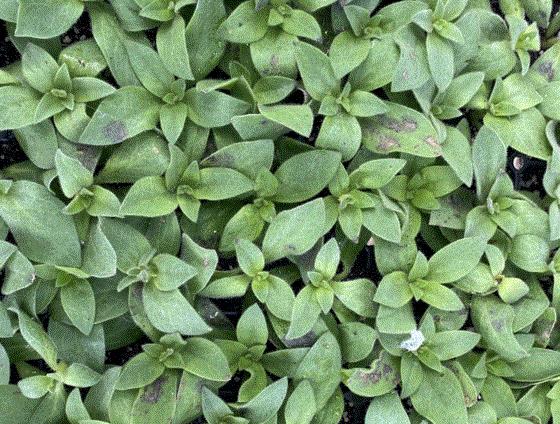
Our tech team’s best estimation was that these cuttings received mild physical damage in transport and now Botrytis spores can be seen on several leaves. The dark spotting may be from the Botrytis, but it may also be the result of a combination of the physical damage and low nutrition and overall stress. Bottom line is to treat with a foliar fungicide and provide an optimum propagation environment with the goal of developing roots, and then removing the plants from the misting (propagation) environment as soon as possible.
More on Recovering Cuttings from Delayed Shipments
That last tip focused on petunias damaged in transit, but there are some crops that can suffer greatly from as little as a day or two sitting in a box in a warehouse or on a truck.
Our friends at Syngenta put together a fantastic TECH SHEET highlighting five species that seem to suffer the most from even a little transportation abuse. This information includes symptom identification and suggested ways to recover these plants with the fewest losses. Species covered are:
-
Geranium
-
Euphorbia
-
Lantana
-
Heliotrope
-
New Guinea impatiens
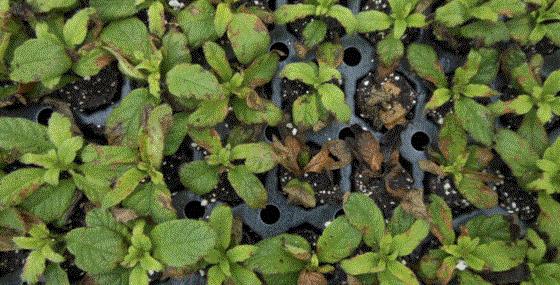
I suggest you print this information out and post it where you receive plants, and file a copy for future reference, because I’m pretty sure you’ll need it at least once next season.
On a similar note, in the tech sheet there’s a link to a STICKING PRIORITY CHART that offers guidance on the species you want to unpack and stick first when prioritizing the hundreds (or thousands) of young plants you will start receiving very soon.
Finish Line …
I’m actually writing this from a meeting room at the 2022 Plug & Cutting Conference in Denver, which is a true meeting of the minds when it comes to young plant production. There must be 300 people here all focused on propagation and the early stages of production—breeding companies, offshore producers, rooting stations, finished growers, independent consultants and university researchers. And me, the press. It’s always fun to see so many facets of the industry gathered to share and learn, and AmericanHort really put together an amazing lineup of presentations over the course of the last few days.
Between yesterday and today, I’ve attended almost 10 sessions and taken copious notes, which will turn into newsletter stories, magazine articles, and Tech on Demand videos and podcasts over the course of the next year. Finding new contacts, techniques, research and strategies were my mission this week and it’s safe to say it was accomplished.
I have to close this newsletter now, because my next session is about to start, but if you are involved in young plant propagation at your greenhouse, consider attending the next Plug & Cuttings conference. You won’t be disappointed!



Please feel free to send your comments, constructive criticism and topic ideas to me at bcalkins@ballhort.com.

Bill Calkins
Editor - Tech On Demand
This email was received by you and 25,942 other fine subscribers!
If you're interested in advertising in Tech On Demand, contact Kim Brown ASAP and she'll hook you up.